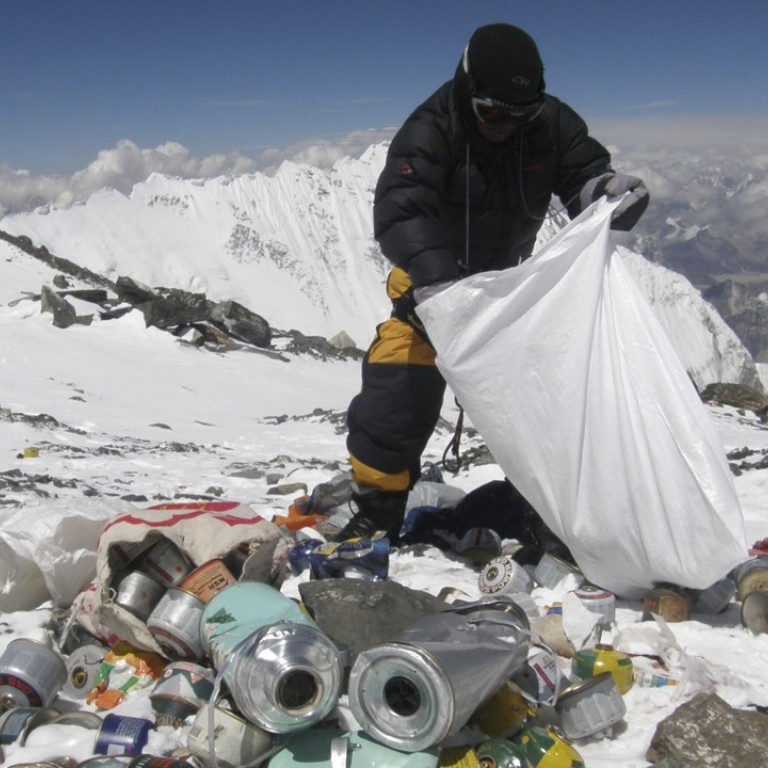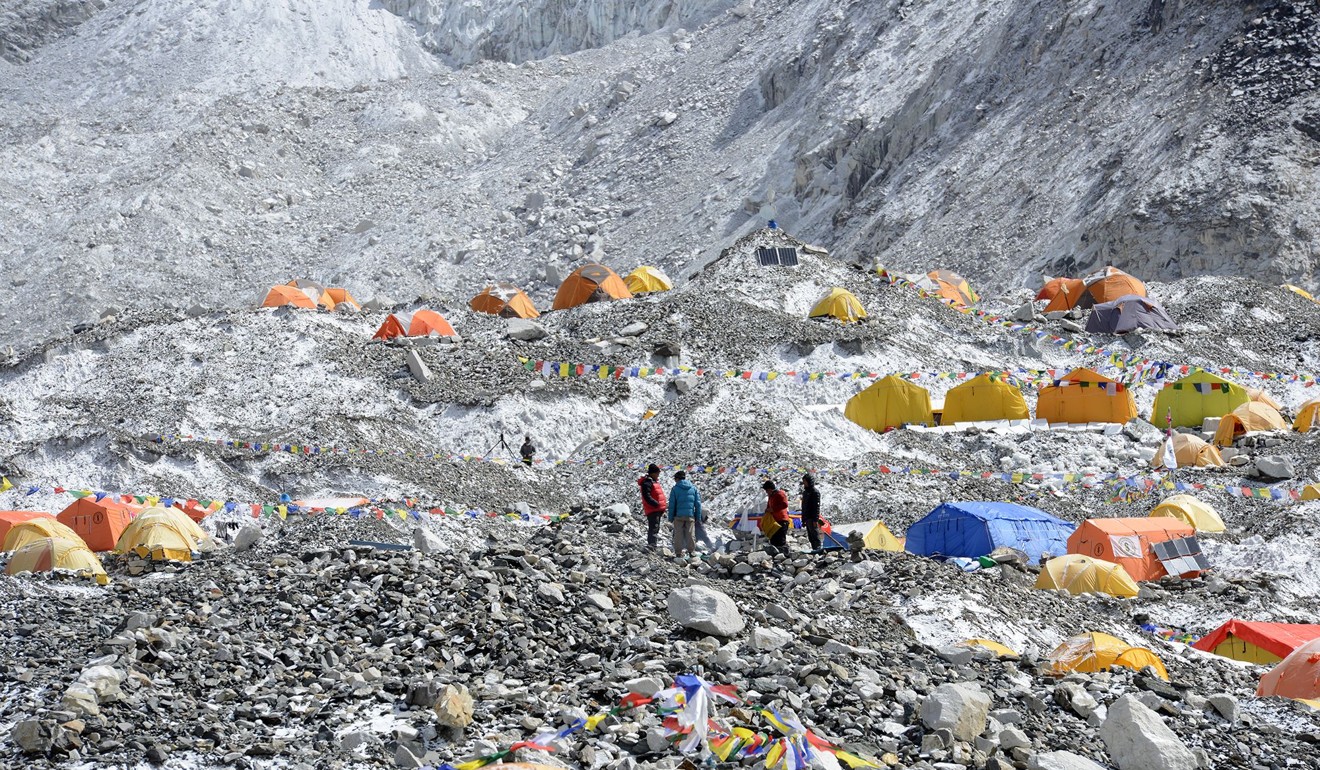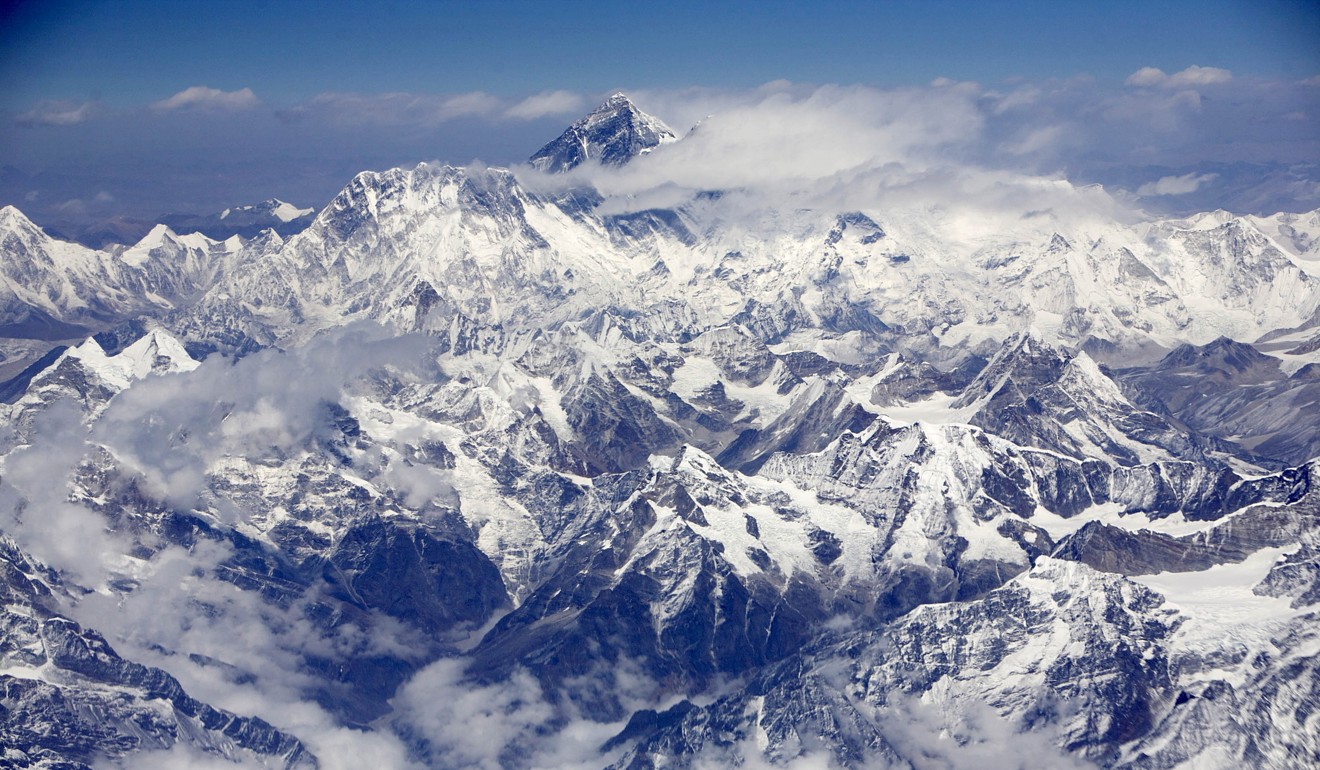
There’s a 14-tonne ‘faecal time bomb’ on Mount Everest. Here's one man’s idea to defuse it
Every person who attempts to climb Mount Everest leaves a smaller mountain behind – about 27kg of excrement
Every year, some 1,200 people make a mad dash for the summit of Mount Everest during the climbing season that begins in May – taking on the arduous, often congested route to the world’s highest peak that most will not complete and some will not survive.
Working against them: temperatures far below zero, altitude sickness with effects that range from disorientation to death, and the ever-present threat of frostbite. More than 200 corpses of ill-fated climbers line the mountain’s slopes, a constant reminder of those climbers’ fatal missteps.
So it should probably come as no surprise if people traipsing up a mountain with its own death zone don’t give too much thought to one particular question: What should we do with all this poop?

If not handled properly, the frozen fecal matter will spend years despoiling one of the wonders of the world. As Grayson Schaff, an editor for Outside magazine wrote in a 2012 Washington Post opinion piece: “The peak has become a faecal time bomb, and the mess is gradually sliding back toward base camp.”
It is a problem Garry Porter, of Washington state, is well aware of. He’s a retired engineer who got more than 6,100 metres up the mountain in 2003 before too-strong winds forced his climbing party to turn back. He’s spent a good chunk of his retirement thinking about Everest – and about how to clean it up.
The peak has become a faecal time bomb, and the mess is gradually sliding back toward base camp
“Everest is a lifetime dream for most climbers. You come off of that and you’re still wrapped up in the scenery and the nature, and … tempering that excitement is the thought that we really made a mess,” Porter said. “It really was a feeling that Everest deserves better than that – and it’s my responsibility because I’m a climber and I can’t walk away saying my crap doesn’t smell.”
His solution for what he calls a potential environmental nightmare is simple: Use a biogas digester to turn mountaineer excrement into something more useful. The digester would produce fertiliser and methane, a renewable biogas that can be used to cook food and light homes.
Supermarket chain Whole Foods uses a similar system to reduce food waste. In fact, the digester Porter wants to build won’t be much different from devices sold on the internet: A large tank that can hold water, human waste and anaerobic bacteria will produce fertiliser and methane gas to power cooking stoves and fires.
There is, however, a mountain-sized hurdle. The bacteria won’t do its work if the temperature is too low. And in many parts of Mount Everest, the thermometer doesn’t go above freezing all year long.
So Porter, a man who spent a career as an engineer but wanted a sizeable challenge to occupy his mind in retirement, had found a problem to solve: How to keep the digester at optimal temperature using only simple materials that can be obtained locally?
The device he’s come up with is a cross between a sewage treatment facility and a gigantic vacuum flask – a digester, buried in the ground and surrounded by insulation. On top of that, subcontractors will construct a basic hut that will keep the elements out and keep the temperature above a relatively toasty 20 degrees Celsius.

If it sounds simple, that’s by design.
If the digester is too difficult to operate – or replacement parts have to be shipped across the world – it won’t last. And the goal is to ultimately turn over the device to authorities in Nepal, who will operate it.
Porter said his group, the Mount Everest Biogas Project, has already got approval to build the digester from the Nepalese government and the blessing of dozens of climbers who sought to conquer Everest, not sully it.
One of his favourite moments of the project was watching a researcher at Kathmandu University turn a knob and spark a blue flame with methane from a prototype digester, all produced by excrement removed from the mountain.
He hopes that that design serves as a proof of concept for other mountains. His group is taking donations, and estimates it will cost half a million dollars to install a working digester on Everest. They could break ground as soon as they raise enough funds.
Porter sees developing the digester as doing his part to care for the 8,848-metre mountain that has pushed him to be better.
“I think you need to earn Everest,” he said. “I’ve spent years climbing lesser mountains – getting experience, getting confidence, and you work up to it.
“I owe something. It’s not my mountain. I’m just there. And I should leave it … as clean as I found it.”

